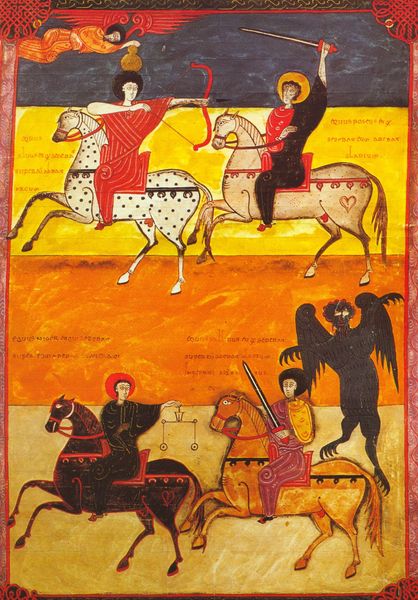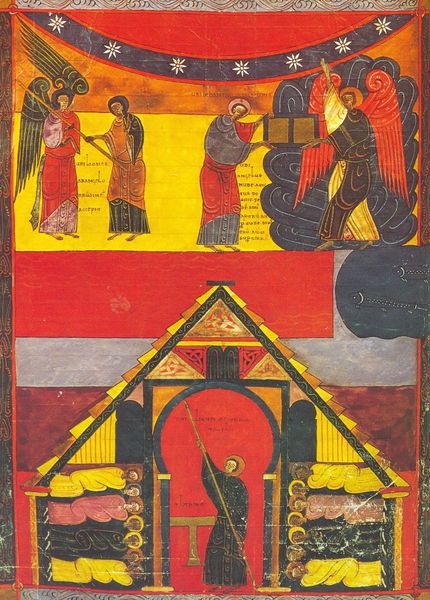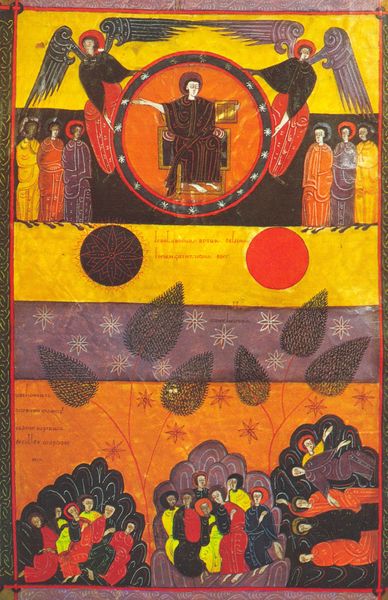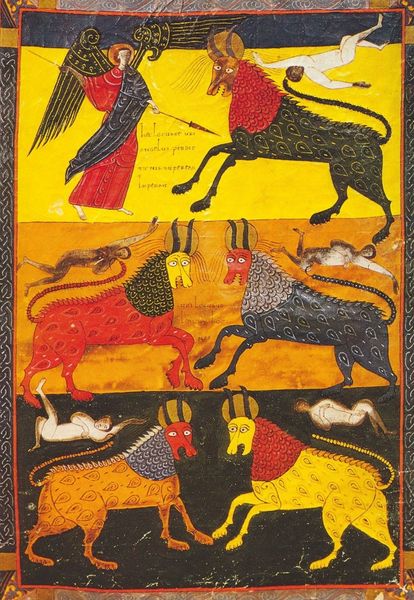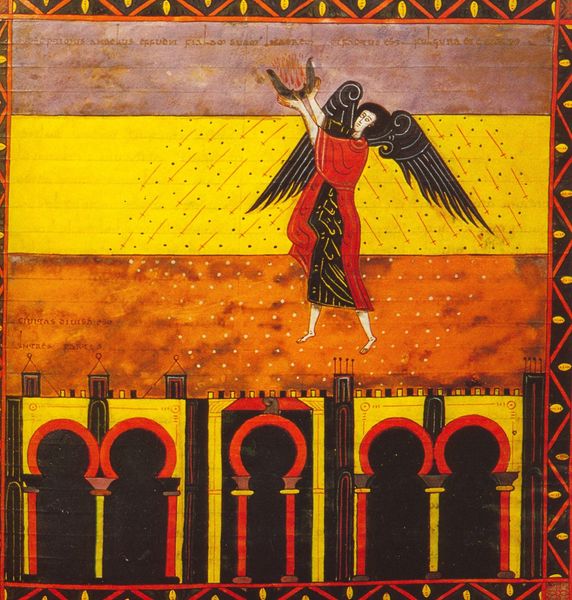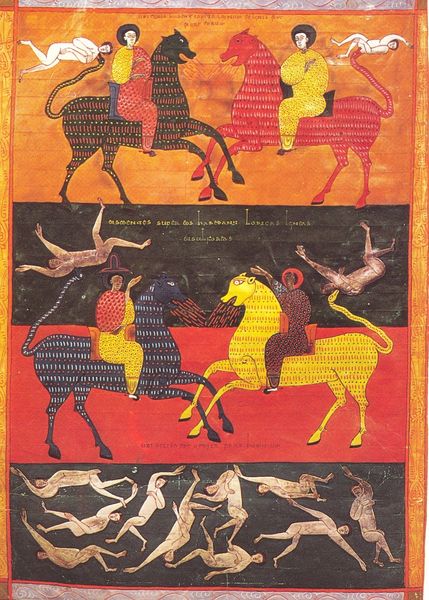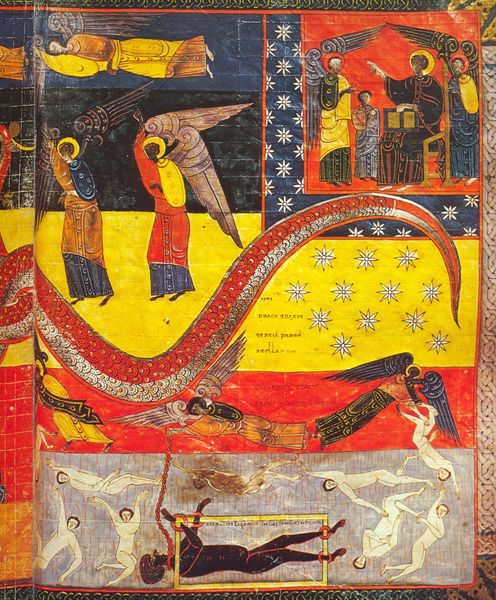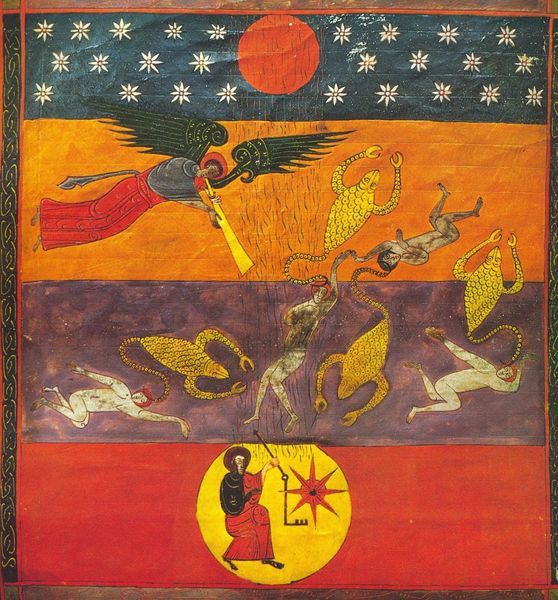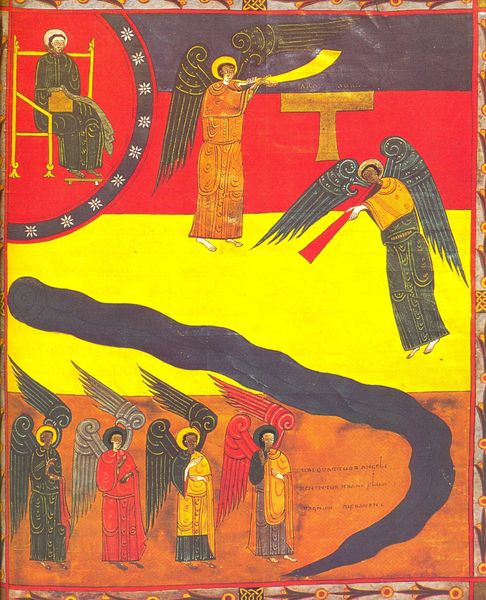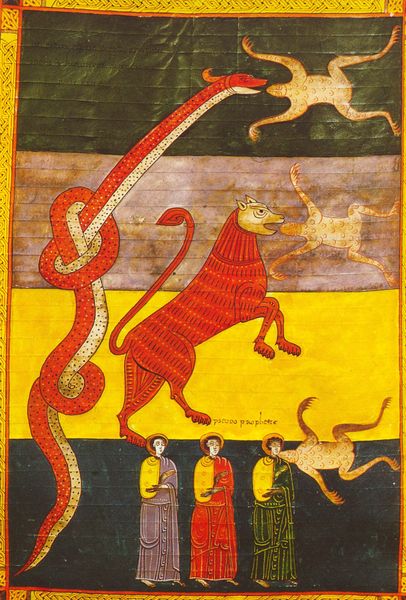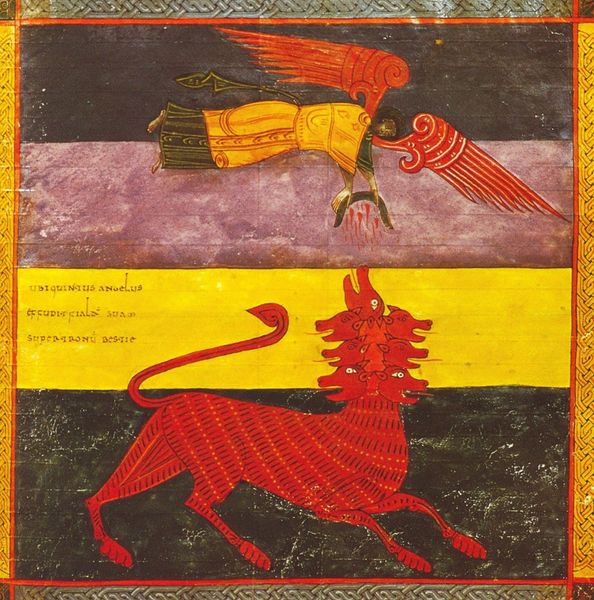
tempera, painting
#
medieval
#
narrative-art
#
tempera
#
painting
#
graffiti art
#
figuration
#
mural art
#
oil painting
#
naive art
#
symbolism
Copyright: Public domain
Facundus made this tempera on parchment illustration, La Bête. Le Temple et l'Arche. Apoc. XI, in Spain during the 11th century. It’s a scene from the Book of Revelation, where a beast emerges to threaten the temple and the ark. Medieval illuminated manuscripts were crucial for disseminating religious and sometimes secular knowledge, though their production was carefully controlled by monastic institutions. Facundus, who worked in a monastery, would have been part of a whole system designed to preserve cultural norms and beliefs. Here we see the social anxieties of the time reflected in the imagery: the monstrous beast, a symbol of chaos and evil, confronts the sacred symbols of order and divine power. Its depiction as a grotesque figure serves to reinforce the binary opposition between good and evil, a common theme in medieval religious art. To understand this image more fully, scholars consult theological texts, historical records, and art historical analyses. These resources help us understand how art reflects and shapes the complex interplay of social, religious, and political forces.
Comments
No comments
Be the first to comment and join the conversation on the ultimate creative platform.
